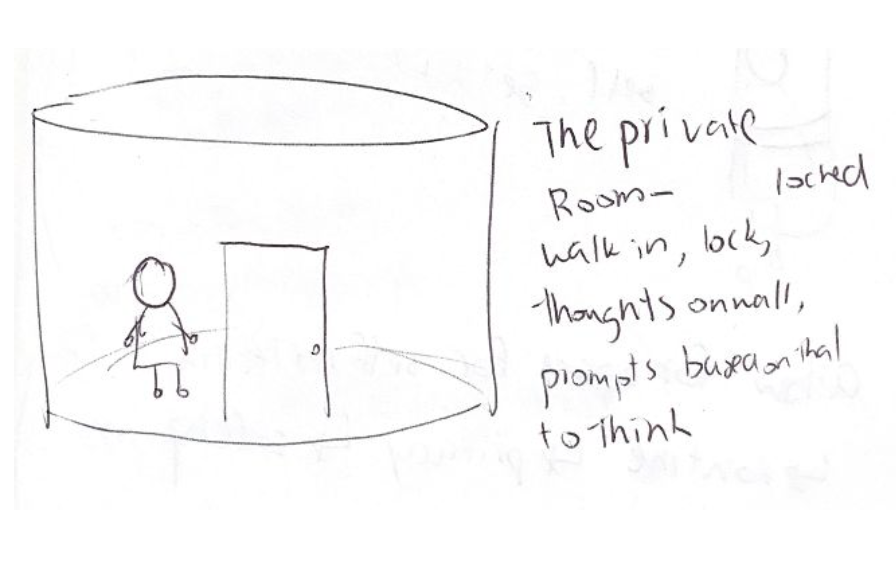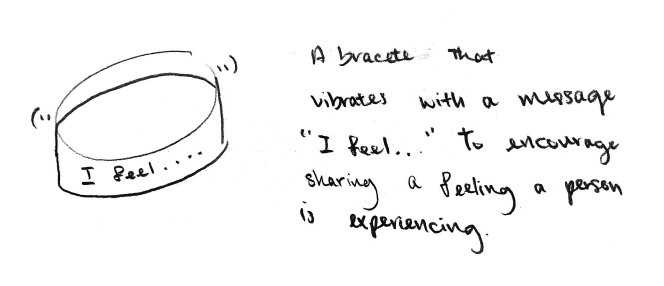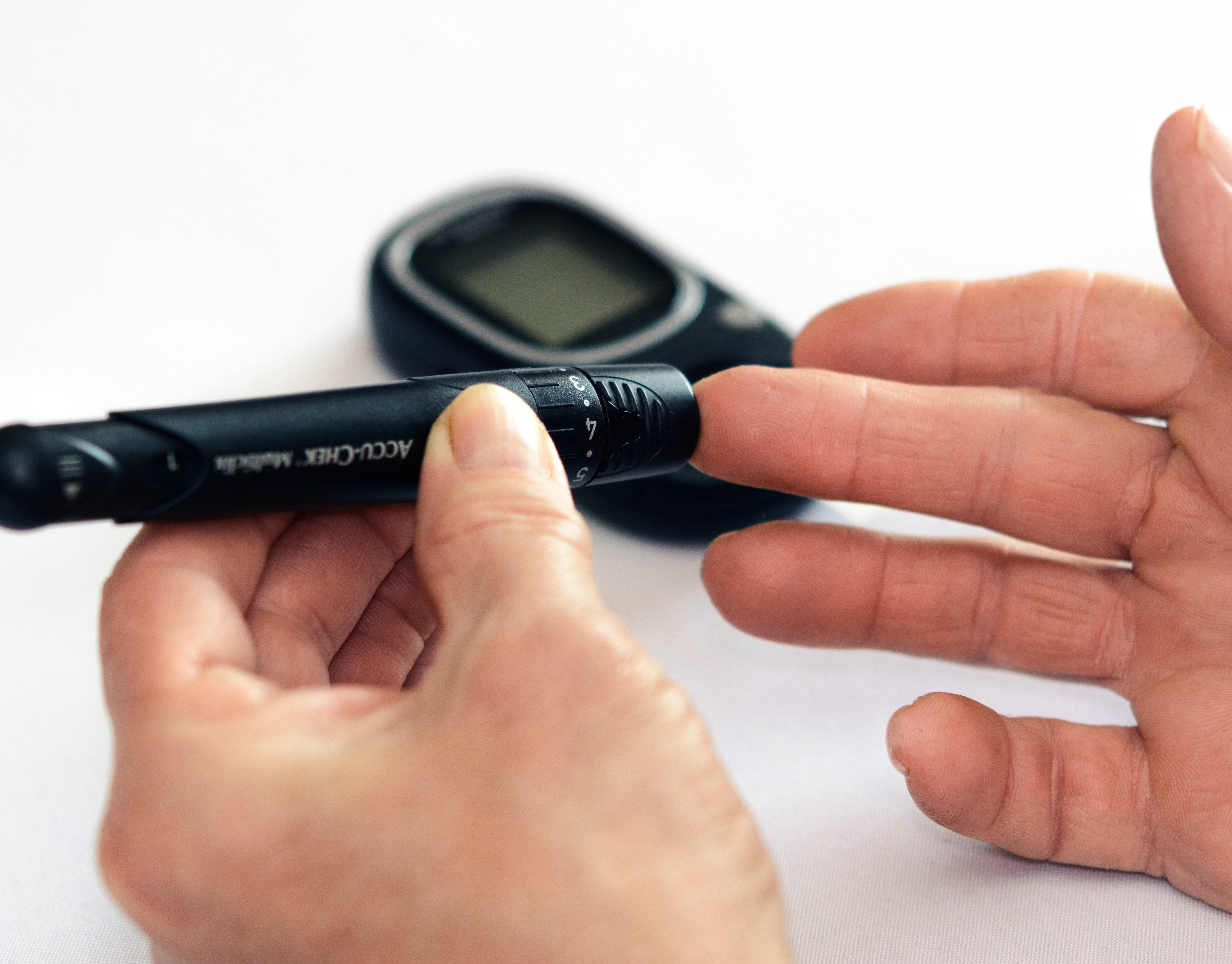My Contribution
● Provided primary research and helped scope down context
● Helped narrow ideation and created prototype audio script
● Wrote the testing protocol
Challenge Overview
The Challenge
In this challenge, we were asked to work in teams to create an experience that allows the user to deeply reflect on their emotional state, and in particular, sadness. The goal is not to resolve the feelings of sadness, but rather to result in the human's increased awareness and appreciation of their sadness. We were given one week to complete this challenge.
Scoping and Problem Statement
We began the challenge by choosing a context that people experience sadness within. We started broad by focusing on when people experience sadness related to health circumstances. We narrowed more by scoping down to the context of supporting a loved one going through a medical crisis, and how often times the person doing the supporting feels the need to stay strong for the other person and cannot be sad and let their emotions out. From this narrowed scope, we created a problem statement:
People supporting loved ones going through a difficult diagnosis often don’t feel like they can engage with being sad because of the need to support and be strong for the loved one.
Primary Research
While we did not specifically conduct primary research for this challenge, we had research from a couple of team members' other projects that were relevant to our scope. We pulled out two quotes that we found particularly relevant to our project and used them to help influence our design.
One quote is from a mother and caretaker of a type 1 diabetic. She talked about how she dealt with her son being diagnosed right after the diagnosis:
“When it happened, I was just like ‘okay, I’ve got to learn everything I need to know to deal with this. I’ve got to keep my sh*t together.’ I don’t think I cried about it for weeks because I was just, like, somebody has to know what the f*ck is going on and how to keep him alive. So I wasn’t allowed to have a breakdown.”
The second quote is from a mother who is a breast cancer survivor. She talked about how she dealt with her personal diagnosis:
“If I didn’t have my aunt to talk to and support me through my journey, I am not sure how I could have handled my diagnosis. I needed to stay strong for my husband and kids, so I didn’t want to look weak in front of them and for them to always make sure to take care of me, while I am home alone. I was able to vent out to my aunt who understood me the most, but she wasn’t physically there to talk to.”
Ideation
Once we had created our problem statement and looked at primary research, we had an ideation session where we sketched out 16 ideas in total. Below I have shown 3 of our top ideas. Click on them to read a caption describing each idea.

Figure 1: A room with nothing in it except walls to write on - someone could sit, think, reflect, write on walls, and erase it when they leave.

Figure 2: A bracelet that vibrates and provides a prompt to encourage sharing how the user is feeling

Figure 3: A voice user interface that asks the user at the end of each day before they go to sleep to reflect on how they are feeling
Narrowed Ideation
We narrowed down to the idea of a physically-situated (i.e. in a hospital) “Reflection Room”, where someone caring for their loved one can be guided by a voice user interface to write a reflection in relation to their sadness for their loved one and put their response up with responses from other people (perhaps on a digital wall). At the end, the individual can choose to share the reflection with their loved one or burn/throw away the reflection.
Prototype
Once we had narrowed down our ideation, we created a prototype in order to test our idea of having a Reflection Room. Though our original concept was situated in a physical room, we deliberated on how this prototype could take different forms. We settled on a VUI prototype because we wanted it to be something a user could revisit when they had time and not have to travel to a physical location for, and we wanted to bring technology back into the experience. Additionally, this was an opportunity to challenge ourselves by using new tools and contexts for prototyping.
Our first step was to create a scenario and a script for what a reflection room that helps someone reflect might be like. We went through a few adjustments of the scenario and questions before we settled on one (below). The questions we generated were intended to stimulate deep reflection on emotions, and we wanted to test whether participants were able to engage with sadness based on the questions and with the Alexa device despite it being an impersonal object.
Using Voiceflow, an online prototyping tool for VUI, we created a basic interactive version of our script for Amazon Alexa. Apart from a few account-related issues setting it up, the tool made it easy to create a flow of moments, from allowing the user to interact to having the Alexa device speak. We uploaded our prototype to an Amazon device for testing.
Prototype Audio Script
1. Hello. Welcome to the personal reflection room. This is a safe space where you can freely express
yourself and your emotions. Are you ready to begin?
2. In front of you, there are materials to write with. Write as much as you want on the following
prompt. Once you feel like you are finished writing, say “next.” Ready to hear the prompt?
Think about the loved one you’ve been caring for - how does this make you feel? What have you
been not been able to express?
Have you cried about your loved one? Why or why not?
Why haven’t you made time for yourself?
3. Thank you for reflecting. You can choose to keep your reflection or “burn it” in the fireplace / throw
it in the trash.
Testing
Goals
With our prototype, we wanted to test a few different things:
● If users understand how to work the Voice User Interface
● If the prototype helped users deeply reflect and feel sadness
● If there was anything we could improve or add that would help users reflect on their sadness more
Process
We set up the prototype testing in a small study room. Participants were asked pre-testing questions about if they have ever needed to support a sick loved one or a loved one through a difficult, emotional time. Then, we provided them a scenario about the prototype, asking them to think about their loved one while using the prototype. When the user was asked the questions by the audio prototype, they wrote down their answers on a piece of paper. After the audio prototype was finished, we asked them a few post-questions related to how they felt about reflecting, their emotions and thoughts when using the prototype, and what they maybe learned about themselves.
We tested with three people - two graduate students and one full-time graphic designer.
Takeaways
Overall, we found that participants did reflect on their sadness from the prototype prompts. Participants realized that they don't always let out their emotions when a loved one is sick or in a difficult situation.
One participant said: "It made me rethink how I put myself aside when thinking about other people."
There were, however, a few usability issues that we found with the prototype:
● We experienced issues with the prototype timing out while the participant was writing responses and had to start the Alexa skill over.
● There was ambiguity on how long the participant was supposed to reflect on the questions.
● Having multiple questions was somewhat overwhelming for participants - they found it difficult to engage with all the questions at a deep level and have enough time to process the questions.
Iterations
From these takeaways, we made iterations to our prototype:
● Before we changed the prompt, we used the Alexa simulator to Wizard of Oz test our prototype (manually entering prompts).
● We added a short time suggestion.
● We scoped down to one question to reflect on, which in a future iteration would be generated based on participant history or at random.
Conclusion
In conclusion, we were able to create a prototype that allowed people supporting a sick loved one to be able to feel and reflect on their own sadness. If we were to continue the project, we would want to further testing our prototype within the identified context, particularly doing testing over a long period of time, similar to a cultural probe method. This would allow us to see how somebody would engage with their sadness over time and how that changes their mental and emotional health. We would also explore more questions for the user to reflect on and answer.




